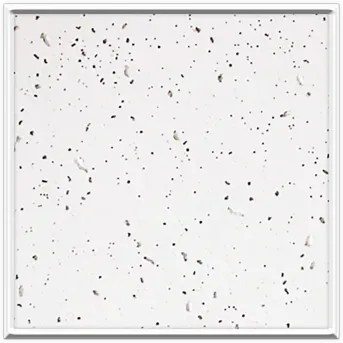- Afrikaans
- Albanian
- Amharic
- Arabic
- Armenian
- Azerbaijani
- Basque
- Belarusian
- Bengali
- Bosnian
- Bulgarian
- Catalan
- Cebuano
- Corsican
- Croatian
- Czech
- Danish
- Dutch
- English
- Esperanto
- Estonian
- French
- German
- Greek
- Hindi
- Indonesian
- irish
- Italian
- Japanese
- Korean
- Lao
- Malay
- Myanmar
- Norwegian
- Norwegian
- Polish
- Portuguese
- Romanian
- Russian
- Serbian
- Spanish
- Swedish
- Thai
- Turkish
- Ukrainian
- Uzbek
- Vietnamese
Nov . 09, 2024 23:07 Back to list
Understanding the Materials Used in Ceiling Grid Systems for Buildings and Interiors
Understanding Ceiling Grid What It's Made Of
A ceiling grid, often referred to as a suspended ceiling or drop ceiling, is an integral part of modern architecture and interior design, frequently used in commercial and residential buildings. It serves not just a structural purpose but also contributes significantly to the aesthetics and functionality of a space. To understand the ceiling grid better, it’s essential to delve into the materials used in its construction and their respective benefits.
The Basics of Ceiling Grids
The primary function of a ceiling grid is to support the ceiling tiles or panels. It is composed of a framework that is suspended from the original ceiling of a building. The grid system creates an accessible space above the ceiling, which can be utilized for electrical wiring, plumbing, and HVAC systems. This accessibility is one of the main advantages of a dropped ceiling.
Common Materials Used in Ceiling Grids
1. Metal The most common material used in ceiling grid systems is metal, specifically galvanized steel or aluminum. Metal grids are favored for their strength, durability, and resistance to fire, moisture, and corrosion. They provide a robust support structure for the ceiling tiles while ensuring a clean, professional appearance. Moreover, metal can be coated to achieve different aesthetics, making it versatile for various design themes.
2. Wood Although less common than metal, wooden ceiling grids can be employed to create a warm and inviting atmosphere. Wood brings a natural element into a space, which can enhance decor, particularly in residential settings or establishments aiming for a rustic vibe. However, wooden grids might be more prone to warping or damage from humidity compared to their metal counterparts.
3. PVC (Polyvinyl Chloride) PVC has gained popularity due to its lightweight properties and resistance to water. It is particularly suitable for environments where moisture is a concern, such as kitchens or bathrooms. PVC grids can also come in a variety of colors and finishes, offering aesthetic flexibility and ease of maintenance.
4. Fiberglass Fiberglass ceiling grids are often used in environments that require high durability and moisture resistance, such as laboratories or industrial settings. They are light, easy to install, and can withstand harsh conditions, making them a practical choice for specialized applications.
Types of Ceiling Grid Systems
Ceiling grid systems can be categorized into various types based on their design and installation method. The most common systems include
what is ceiling grid made of

- T-Bar Grid This is the most prevalent type used in commercial applications. The T-shaped bars form a grid pattern that holds the tiles in place. The T-bar grid provides the flexibility of easily replacing damaged tiles and accessing the space above.
- Visible Grid System In this system, the grid is part of the ceiling's visible elements, lending a modern and industrial look to interiors. The grid is typically painted to match the ceiling tiles, creating a cohesive design.
- Concealed Grid System This type hides the grid from view, allowing for a smoother ceiling appearance
. The grid is still essential for structural support, but it doesn’t distract from the overall design.Advantages of Using a Ceiling Grid
The choice of materials and systems for ceiling grids brings numerous advantages
- Accessibility The space above a dropped ceiling provides easy access to plumbing, wiring, and HVAC systems, making maintenance tasks much simpler.
- Acoustics Ceiling tiles can improve sound absorption, contributing to a quieter environment, particularly in commercial spaces like offices and schools.
- Aesthetic Variation The wide variety of materials and finishes available allows for customization based on the design requirements of a space.
- Cost-Effectiveness Installing a drop ceiling can be more economical than renovating an entire ceiling, especially in older buildings where the original ceiling may not be aesthetically pleasing.
Conclusion
Ceiling grids are a vital component of modern architecture, made from materials that vary in form, function, and aesthetic appeal. From metal and wood to PVC and fiberglass, each material offers unique benefits that can enhance the design and functionality of a space. By understanding what a ceiling grid is made of, property owners and designers can make informed decisions that contribute to the overall success of their projects, ensuring both practicality and style.
-
Transform Interiors with PVC Gypsum Ceiling: A Stylish, Durable, and Moisture-Resistant SolutionNewsMay.19,2025
-
The Smart Interior Upgrade: Discover the Durability and Versatility of Gypsum Ceiling Access Panel SolutionsNewsMay.19,2025
-
The Smart Choice for Interior Design: Discover the Value of PVC Gypsum Ceiling SolutionsNewsMay.19,2025
-
Mineral Fiber Ceiling Tiles: The Smart Blend of Performance and AestheticsNewsMay.19,2025
-
Mineral Fiber Ceiling Tiles: The Superior Choice Over Gypsum for Sound and Fire SafetyNewsMay.19,2025
-
Mineral Fiber Ceiling Tiles: Eco-Friendly Strength and Style for Every CeilingNewsMay.19,2025







